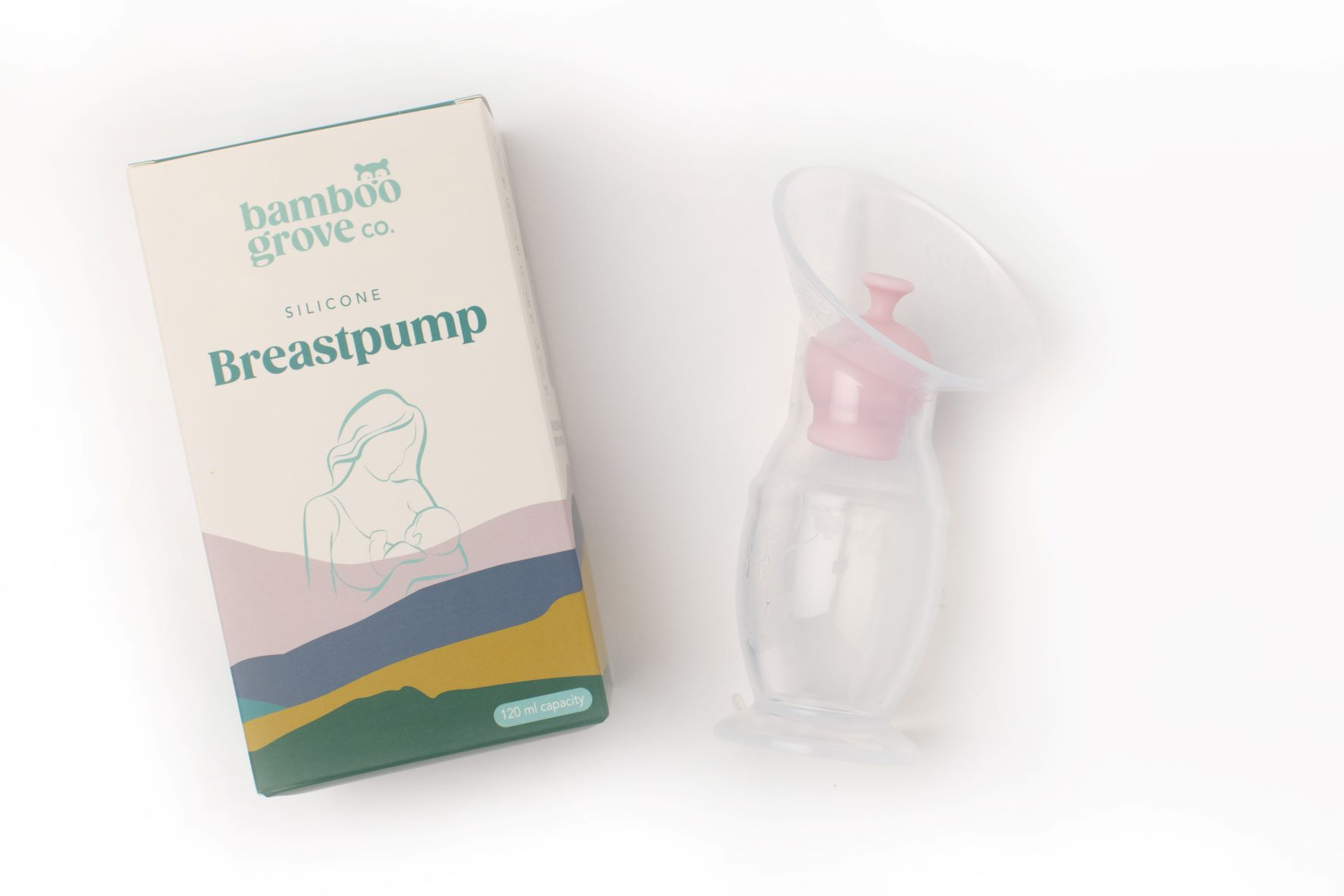How is Breast Milk Supply Regulated?
The human body is a wonderful thing. The female body in particular goes through some amazing changes when pregnant, giving birth and breastfeeding. Producing breast milk is certainly one of those miracles that are often taken for granted and we do not always take the time to think about how complex this amazing process really is.
How is breast milk supply regulated?
Breast milk production is regulated by a delicate balance of hormonal and genetic factors. Hormones are released in response to various stimuli, such as how often your baby is feeding, your thoughts and emotions, or the sight or sound of your baby.
During the last few weeks of pregnancy and the few hours after birth, your breasts produce colostrum, or the first (very oily and nutritious) milk. Progesterone levels are very high at the time, which inhibits milk production until after the baby is born.
Within the first week after birth, the sudden drop in estrogen and progesterone hormones and associated increase in prolactin, causes milk production to go up significantly. During this time, you will start to notice your breasts are throbbing because of too much milk, and you have to wear breast pads because of leaks.

Breast milk supply and demand
This phase does not last long and after a few weeks, your hormones stop controlling the milk production, and demand kicks in. This stage is known as supply regulation. It is where the demand for milk determines how much of it is supplied to prevent things like pain and leaking. The more your child breastfeeds, or the more you pump, the more milk you will produce. If you have an over supply then block feeding from one breast and avoiding pumping will reduce the amount of milk your body makes.
Other factors that affect breast milk supply:
-
Diet: Eating a well-balanced diet is important for maintaining a good milk supply. Have a look at these useful suggestions to ensure the right Nutrition During Breastfeeding.
-
Medical problems: Medical conditions that can impact on breast milk supply include an under active thyroid, polycystic ovarian syndrome (PCOS) and pregnancy induced hypertension.
-
Medications: Some medications, such as the contraceptive pill and pseudo-ephedrine can interfere with milk production. Always seek advice from your doctor, lactation consultant or pharmacist before starting a new medication while breastfeeding.
-
Emotional factors: Stress can absolutely affect how much milk you make, especially when also dealing with sleep deprivation! Learning some relaxation techniques and making time for regular exercise can be very helpful.
-
Sleep deprivation: Getting enough sleep is important for all new parents, but it can be especially difficult when you are trying to establish breastfeeding. Try to rest when your baby sleeps, even if it’s just for a short while.
-
The list goes on, for further reading have a look at this AAP review article.

How do mums know whether their breast milk supply is adequate?
There are a few ways to tell if your milk supply is adequate. One is by the number of wet nappies your baby has in a day. Six to eight wet nappies are a good indicator that your baby is getting enough milk. Another way to tell is by your baby's weight gain. As long as your baby is gaining weight, that's a good sign that they're getting enough milk. On average babies will gain about 150 - 200 grams per week (or an ounce a day, for those thinking in imperial measures) for the first few months. Lastly, you can tell by your baby's overall contentment. If they seem happy and satisfied after feedings, that's another good sign they are more than likely getting enough milk.
You will know your milk supply is enough if your baby:
-
Your baby seems satisfied and content after breastfeeding, and they sleep quite soundly after that.
-
Your child is alert and energetic when they are awake.
-
The child is gaining weight consistently.
If your baby wants to feed many times throughout the day, that is not a sign of low milk production. Most babies feed 8-12 times a day because they associate breastfeeding with comfort, and milk tends to run through the body pretty quickly.
You will know your milk supply is low if your baby:
-
Has fewer wet nappies,
-
Does not gain weight as expected,
-
Looks dehydrated or lethargic or
-
Is still hungry after feeding from both breasts in one feed.
Milk supply will go up if your baby demands more feeds, but sometimes it is difficult for your body to respond adequately or quickly enough to your baby's needs. Expressing milk and topping your baby up, might help to increase milk supply and ensure that your baby gets enough food.
How and when to express breast milk?
There is no one-size fits all recommendation, and the answer will depend on the situation and what you feel you will be able to cope with. It can be incredibly exhausting to breastfeed, pump, top-baby up, just in time to restart the process again! Then to also consider all the expressing options such as hand expression, manual or electric pumps.... the lists goes on.
Here are a few suggestions to help determine which options work best for you. Talk to your lactation consultant, midwife or paediatrician to get more specific advice.
Hand expressing:
Hand expressing is often the easiest way to collect colostrum before baby is born or in the early days when milk supply is still low. The expressed colostrum can be used to feed babies who have initial difficulties latching, those who are very sleepy after birth, unwell babies or babies who have difficulties regulating their blood sugar. Sometimes bigger and more vigorous babies also need extra milk in the first few days and the extra colostrum can be helpful to fill them up while your milk supply is being established.
The volumes expressed by hand are often low, but hand expressing can be more effective in the first few days before milk supply is established.
Electric breast pumps:
Electric breast pumps, especially double pumps, are probably the best solution if you need to express frequently and larger volumes, for example if you are returning to work full time or need to express for a sick baby or one that has difficulties latching. Some mums also choose to exclusively express and a double electric pump will probably be the easiest options if you need to keep up with around the clock pumping.
Manual breast pumps:
Manual breast pumps are easier to use than electric pumps, as it is portable, have fewer moving parts, is easier to clean, does not require electricity and is cheaper than electric pumps. It is a perfectly fine option for most breastfeeding mums who only need to express occasionally.
Silicone manual pumps and breast milk collectors:
Silicone breast pumps have increased hugely in popularity over the past years, and with good reason! Definitely the simplest, easiest and cheapest way to express milk. The silicone pump creates suction by forming a vacuum seal to express or "draw out" milk. The silicone manual pumps are lightweight, easy to use and portable, carry one in your nappy bag for any expressing emergencies :-)
The easiest way to use silicone pumps are to express in tandem, while baby is feeding from the other breast. Simply place the flange (the funnel part) over the breast, compress the silicone dome to create suction and voila, let the milk flow! By attaching the silicone breast pump to the opposite breast from which your baby is feeding, you can catch a decent amount of milk from the let-down reflex and use the extra milk as a top-up if you have a very hungry baby or freeze it for later use.
These simple devices are great to boost supply for women that need just that extra bit of stimulation. Tandem feed from one breast, as described above, switch breasts once your baby has drained the one breast and repeat on the other side. The extra stimulation from the breast pump will certainly help to boost supply. Certainly an easier solution than having to use an electric pump after each feed.
For women who have an over supply of milk, a silicone pump can be useful to relief the discomfort from engorged breasts of soften your breast prior to a breastfeed.

Conclusion
Breastfeeding is a complex topic and we hope that the above provided a bit of an overview about how supply is regulated. The advice is certainly extremely general and we recommend that you discuss more tailored advice with your healthcare professional, to ensure you get the best advice for your particular situation.
Where to get breastfeeding help?
-
Australian Breastfeeding Association has downloadable information booklets and can provide some phone support. 1800 mum 2 mum | 1800 686 268
-
Most midwives are very knowledgeable and will be able provide help with breastfeeding. Contact your birthing hospital or unit, who should be able to put you in contact with someone locally.
-
Lactation Consultants of Australia and New Zealand (LCANZ) is the professional organisation for International Board Certified Lactation Consultant's (IBCLCs®), health professionals and members of the public who have an interest in lactation and breastfeeding in Australia and New Zealand. You can find a Lactation Consultant through their website.
-
Your regular GP or baby's paediatrician can also help with more tailored advice.
Disclaimer
The healthcare information provided in this document is general in nature and not designed to replace personalised professional medical advice. Please consult your healthcare provider for advice if you are concerned about your health or the health of someone you know.




